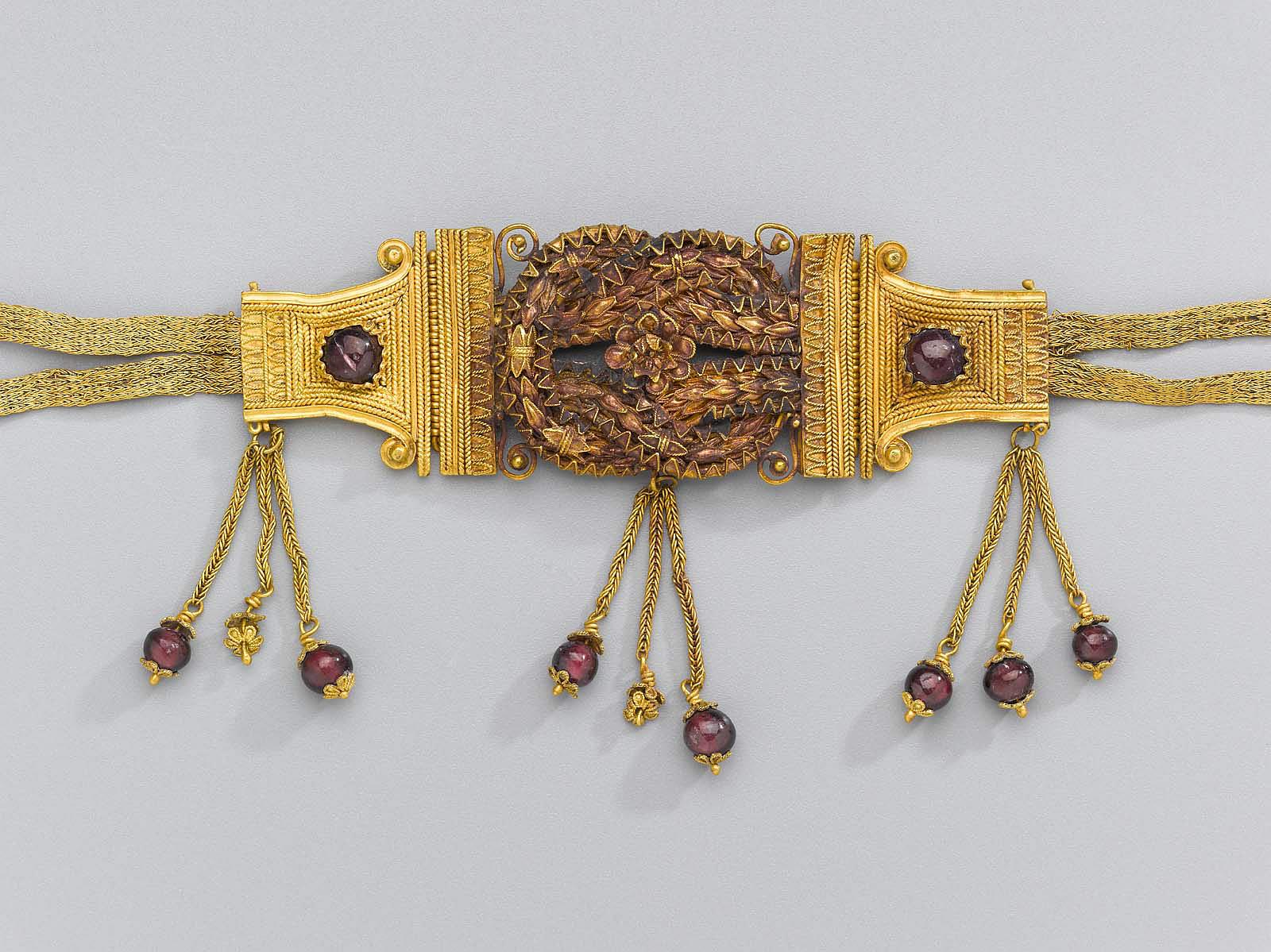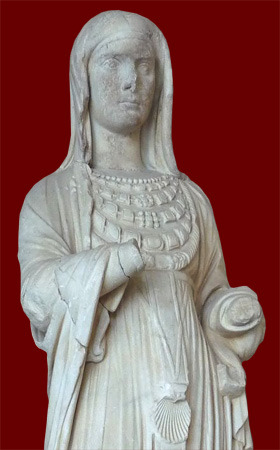


photo: Archivo Au, A. Perea
This very elaborated filigree diadem is a part of J’avea Hoard (Alicante, Spain) and is dated to the 5th century BCE. Made of gold has a form of a flexible band, is 37 cm long and 8,20 cm wide.
This diadem is shown on the sculpture from the Iberian sanctuary of Cerro de los Santos, in Montealegre del Castillo (Province of Albacete, Castile-La Mancha, Spain). The limestone head of a woman is dated to the 4th-3rd century BCE. “the diadem is clearly inspired by that of the Treasure of Javea (inventory number 20,258)” [Museum’ description]

Such a construction of a diadem, with triangular endings connected by hinges to the main part, probably came to Iberia with the Phoenicians. But the Iberian version, influenced by the Greek aesthetic, is much more elaborated and delicate.
This pattern has survived in Spain for centuries. In a simplified form, but decorated with colored stones or glass, the flexible diadem is known from the 10th century treasure of Charilla.

- Tomb 100 at Cabezo Lucero: new light on goldworking in fourth-century BC Iberia
A. Perea, B. Armbruster https://www.researchgate.net - Alicia Perea, Contacts and Transitions: Iron Age gold in the Eastern Iberian Peninsula https://www.researchgate.net
- National Archaeological Museum, Madrid, Spain; inv. no. 20258 [diadem]
- National Archaeological Museum, Madrid. Inv. no. 7510













